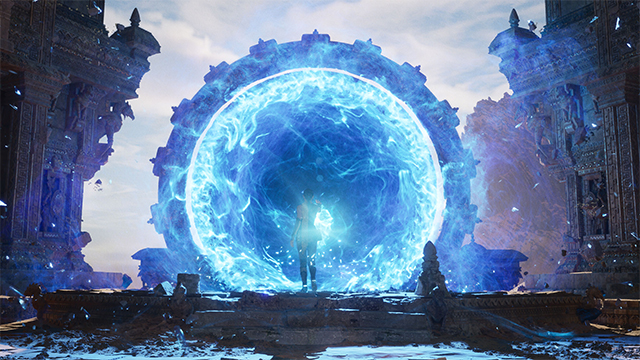Epic’s Unreal Engine 5 demo was utterly spectacular. It was thoroughly explained, not cut up like a trailer, and looked incredible; a true example of the power of the next generation. The whole presentation was a stark contrast on what Microsoft spit up last week. And while the sheer visual fidelity was easy to gawk at, the presentation made one thing way more clear: tools are going to be the most important part of the PS5 and Xbox Series X that will hopefully forever change gaming.
Every part of the demo was paired with an explanation that didn’t just boil down to bragging about their artists and how they didn’t see their kids for weeks in order to render all these damn triangles. Instead, they all came with how the Unreal Engine 5 toolset enabled them to do these jaw-dropping feats that was summed up in their mission statement: “art that just works.”
ALSO: How the DualSense has learned from the DualShock 4, Xbox controller, and beyond
Nanite, one of the core technologies of UE5, will allow artists to directly import their work and it “just works” within the game without needing to account for polygonal budgets or baked-in details that take extra effort. Lumen, the other core technology, does a similar thing to lighting as it, according to the website, “erases the need to wait for lightmap bakes to finish and to author light map UVs.” While drowned in jargon, both essentially dramatically cut down the back and forth can slow the creation process down.
An epic proposal

These two tech-driven initiatives are huge breakthroughs for letting developers just develop. They don’t need to worry as much on the minutiae that can hold developers back. Epic CEO Tim Sweeney made this clear multiple times in the various interviews he’s done talking about his studio’s newest baby.
“Unreal Engine 5 gets us far, far closer to photorealism than we’ve ever been before,” he told GamesIndustry.biz. “But these are not just technologies for improving the visual quality of games. The other aim and perhaps even the bigger aim is to make content creators more productive, so that you can build next-generation games with a small team and produce incredibly high-quality results without a vast budget.”
He went into more detail while describing the engine to VentureBeat.
“But our goal isn’t just to bring more features to developers — it’s to help solve the hardest problem in game development right now,” he said. “Building high-quality content takes enormous time and cost. We want to make developers’ lives easier and more productive so they can build more effective businesses.”
Efficiency is such an important facet because it’s something that film and television don’t have to always deal with so aggressively. Even though filmmaking is a tough process, the creators don’t usually have to code gravity, lighting, or redo the camera every few years. Nature can mostly handle a lot of that and lets the creatives focus on how to shape and apply what’s there instead of having to start from scratch and fit everything within memory budgets. Sweeney even specifically mentioned that developers won’t have to build chairs or rocks ever again, which assuredly cuts down on a lot of mindless busywork.
The all-powerful SSD

Sony seems to get this, too. Mark Cerny was adamant about the PS5’s ease of use in multiple ways. One of his core tenets in his ASMR PS5 power hour was “listening to developers,” which is where the SSD came from.
Cerny said it gives designers “freedom” and talked about how blazing fast loading times can knock down those cheap winding paths and elevator rides that obscure your view and load in the next section. He even called those tricks “sabotage” and the level design needed to work around loading a “giant distraction.”
And he’s right. Games require extra developer hours to move around their limitations from copying data multiple times (which can limit how much can fit on the disc) to figuring out how to load the next level. It’s why so many titles have cramped areas you have to crawl through if they just don’t cut to a boring loading screen. Immersion takes a hit either way and it’s not something that enhances the developer’s vision; it actively impedes it.
These roadblocks can come in multiple forms and probably help contribute to crunch. If all of this time is spent scaling assets and working around lighting limitations, then that is going to keep people at the office for longer stretches of time. Game development is already riddled with an absurd amount of overworking so these tools could help ease some developers into more less intense schedules, which would also help make games better and more seamless. More work gets done, more important things are prioritized, and less time is wasted doing menial tasks.
Epic and Sony seem pretty committed to removing all of these barriers so it makes sense that they’ve both been closely working together, according to VentureBeat. Each party has laid out how it understands the importance of developers and how their visions need to be free from the longstanding shackles that have plagued game development. Games will always evolve in each generation, but the process is the most important part. It’s about time big figures in the industry are doing something about that.







